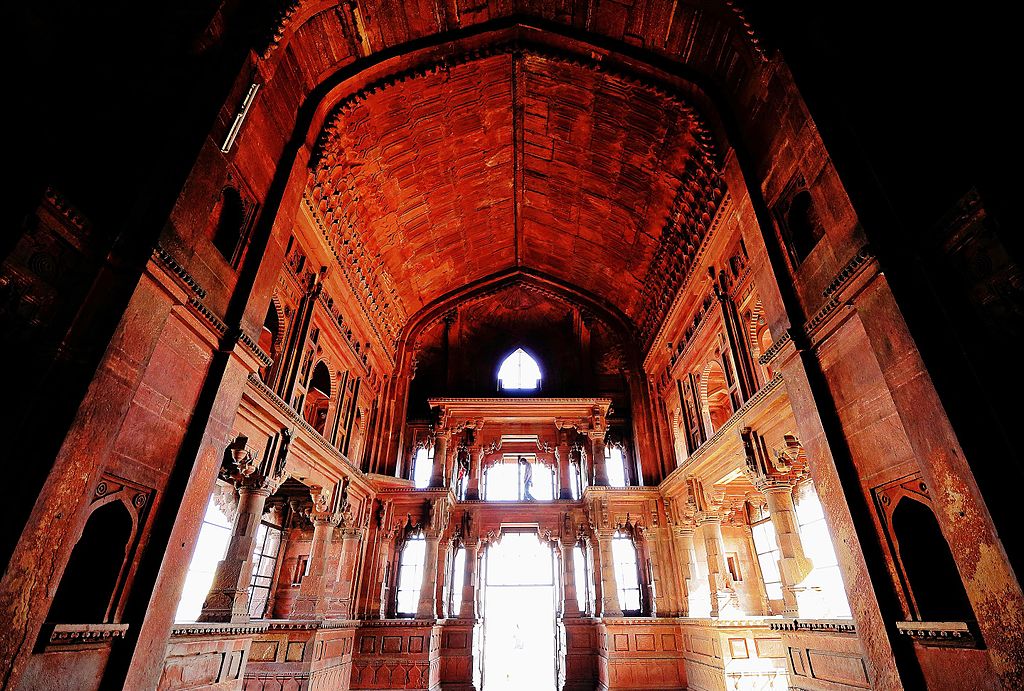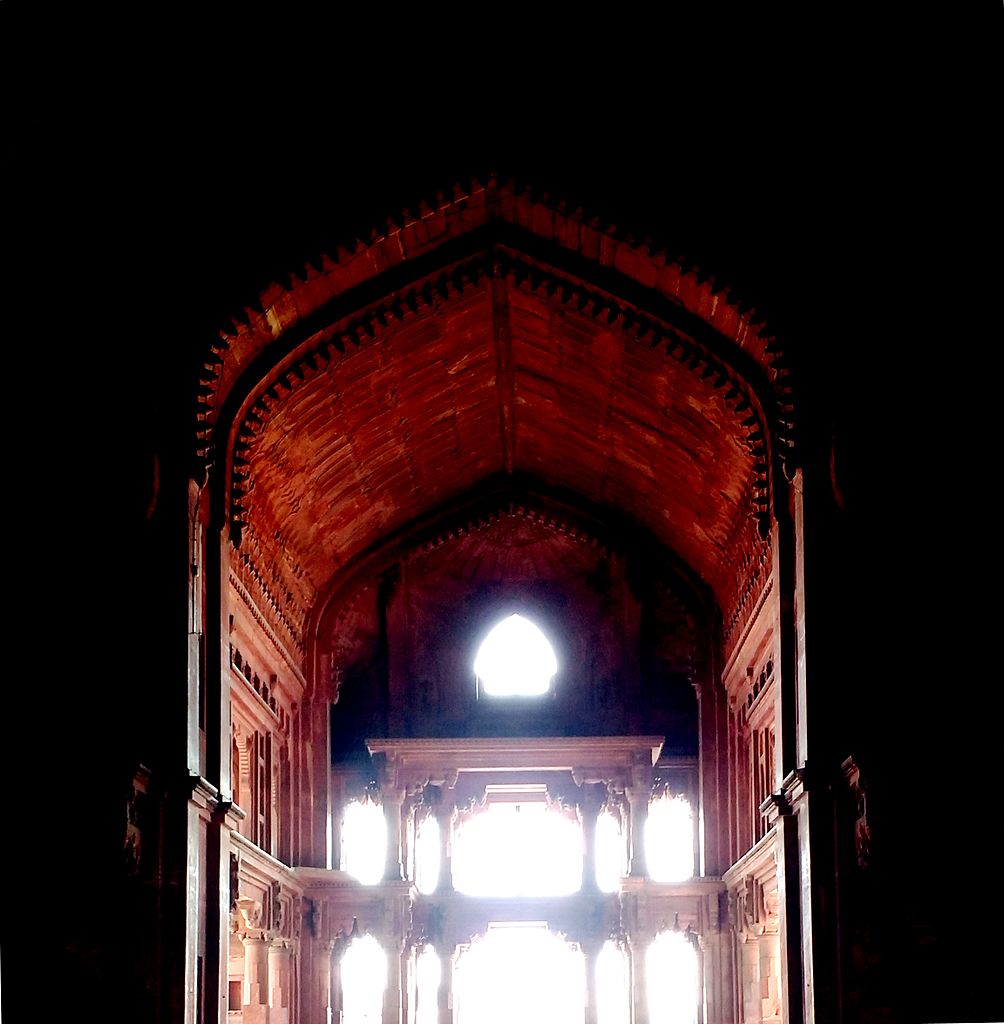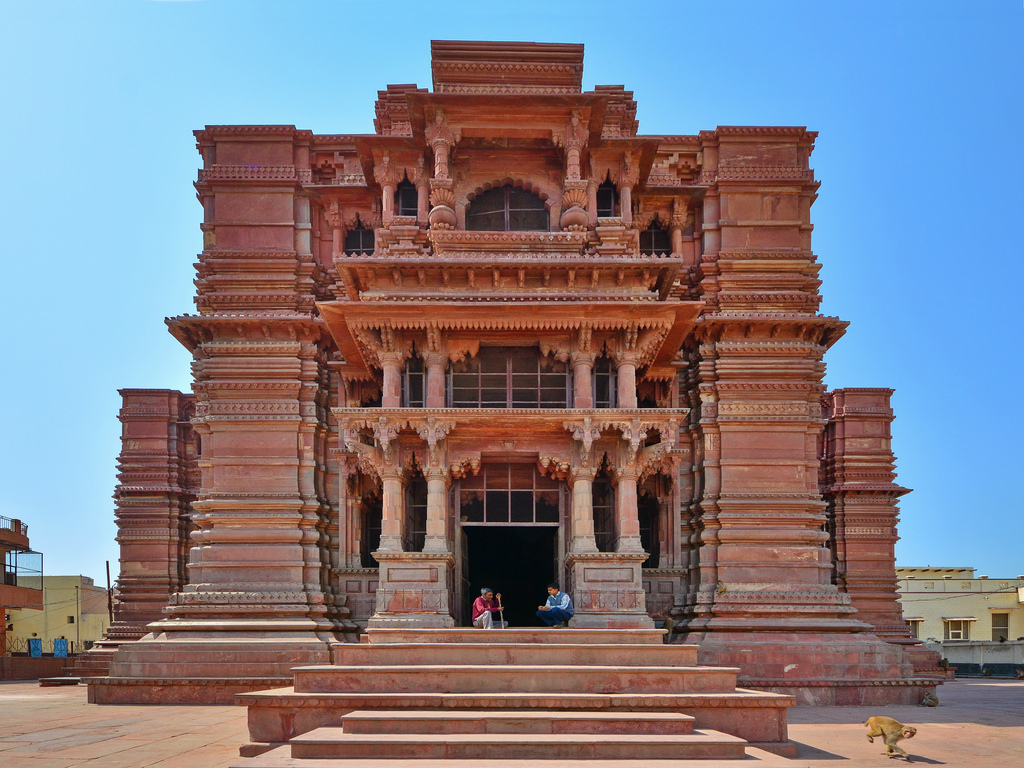Govind Dev Ji Vrindavan




Mutual respect for each other’s ideas and accommodating different points of view is how progress is made and it often leads to extraordinary achievements by mankind. Raja Man Singh a powerful king of Amer understood this principal well. As a young prince in his twenties, tall, handsome and sporting a big moustache, Man Singh had a commanding personality. He was born in a royal family and came from a lineage of powerful rulers. His father was Raja Bhagwant Das, and his grandfather was Raja Bhagmal who had married his daughter Jodha Bai to emperor Akbar when Man Singh was only 12 years old. Man Singh’s father Raja Bhagwant Das and Jodha Bai were brothers and sisters and this would make Man Singh a nephew of the queen of the mightiest empire in India at the time - the Mughal empire. Man Singh earned the respect of emperor Akbar by winning several battles for the Mughals including the one with famous Rana Pratap in Haldi Ghati in Rajasthan when he was only 26 years old. He soon became a trusted military general for the emperor and was also one of the nine most powerful members in Akbar’s court. He joined luminaries such as Abul-Fazl a prolific writer, Rahim, Tansen, Birbal and Todarmal to name a few. While Man Singh had his loyalty to the emperor, he was not a pushover. When emperor Akbar asked members of his court to adopt Din-E-Elahi, a religion Akbar himself founded, Man Singh declined. It takes tremendous courage to say No to the most powerful emperor and while Man Singh knew the power of compromise, having witnessed the most significant alliance his family had formed with Mughals by marrying their daughter to Akbar, but Man Singh was not someone who would compromise his values to please someone even if that person was the emperor himself. It’s not like he didn’t respect Akbar. He was a trusted confidante of the emperor, he himself was a nephew of the queen but to Man Singh, respect is reciprocal. He knew that Akbar is a person who respects other viewpoints and for Man Singh, his belief and his faith in Lord Krishna was firm and something that couldn’t be shaken.
How did Man Singh develop such a strong belief system and faith in Krishna? He was a Hindu by birth but many others, including Birbal who was also a Hindu by birth adopted Din-E-Elahi. To understand this, we have to go back in time by about 70 years. About 250kms away from Amer, Man Singh’s ancestral home, there is a place called Vrindavan. Vrindavan was a jungle at that time. Van literally mean a jungle. A spiritual guru Sri Roop Goswami had unearthed idols of Lord Krishna in Vrindavan which were of historical significance as they were believed to be created by grandson of Lord Krishna himself. Vrindavan is believed to be the place where Krishna lived and played during his childhood and according to ancient Indian scriptures, many Krishna temples existed in Vrindavan area. These temples got destroyed during the period of continuous attacks from Muslim invaders from north and priests of these temples buried the idols in ground to safeguard them. However, after hundreds of years, people forgot that these idols even existed. The entire area was abandoned, trees and bushes grew and this area became a forest. Roop Goswami didn’t unearth these idols by an accident. His spiritual leader was none other than Chaitanya Mahaprabhu, who had come to Vrindavan in 1516 and found similarities in this place with the description in old Indian scriptures such as Bhagvat Purana that documented where Krishna lived during his childhood. Chaitanaya Mahaprabhu moved to Orissa, which is almost 1500 kms away but he took vivid memories of Vrindavan with him and he studied old scriptures in even more detail. He eventually realized that Krishna temples and idols must exist in Vrindavan and he sent two of his disciples Roop Goswami and Sanatan Goswami, both brothers, to find these lost idols. Goswami brothers did find buried idols in the ground and these findings led to the revival of Hinduism in the area. Seat of the Mughal empire was just 60 kms away in Agra, but Vrindavan’s stories were influencing Hindus as far away as Amer and helped strengthen people’s faith, including Man Singh.
There were several idols uncovered in Vrindavan and small temples were built to house them, but one of the idols came to be known as Sri Govind Dev Ji. It is believed to be created from the description provided to Krishna’s great grandson Bajranabh by his grand-mother who was daughter-in-law of Lord Krishna. Based on the description, 3 idols were created but only one of them Sri Govind Dev Ji depicted Lord Krishna’s looks exactly according to Bajranabh’s grandmother who had seen Lord Krishna with her own eyes. All this was documented in Bhagwat Purana and finding the idol in Vrindavan provided a physical proof of the stories mentioned in Purana. When Sri Govind Dev Ji idol was found, to house this, Roop Goswami built a small temple with limited resources at Goma Tila, the place where the idol was found. This temple was built in 1525 when Man Singh was not even born, but stories of Vrindavan and Sri Govind Dev Ji were the stories Man Singh grew up with and during this process, he had become a staunch devotee of Krishna.
After Mansingh’s father Raja Bhagwant Das’s death, ManSingh became the king of Amer in year 1589. As a king, one of the very first things he wanted to do was to revive temples in Vrindavan. But Vrindavan was just at the outskirts of Agra and Mughals had control over the entire area. So, he approached emperor Akbar for some help. ManSingh and Akbar had good relationship and while ManSingh had declined to join Din-E-Elahi before, this didn’t stop these two men from collaborating. Akbar not only provided the entire land of Vrindavan for revival of Hindu temples, but he also offered the coveted red slate stone which was very expensive material at the time and was used exclusively for building forts and palaces. The famous Red fort in Agra is built using the same stone. By offering both land and the stone, Akbar showed a great deal of respect for Man Singh’s religious beliefs. When someone offers you respect, you must reciprocate. That’s how trust and bonds are built and ManSingh understood this well. ManSingh reciprocated to emperor’s gestures in an equally generous way by deciding to build a temple for Sri Govind Dev Ji in Haveli style of architecture, a sharp departure from traditional Hindu temple architectures. This temple would still be a magnificent seven story structure, but it would not look like a Hindu temple from outside at all. Instead this will look more like a Haveli, which is an architectural style of a mansion with some Arabic and Persian influence. Unlike most Hindu temples, which had frescoes of god, goddesses, and scenes from Indian religious tales, this structure was going to be plain. This was a way to show respect for Akbar’s religious beliefs. Construction was completed in just one year and a magnificent temple was built using the most expensive red slate stone in the same location where the idol of Sri Govind Ji was found by Sri Roop Goswami in in 1525.
Sri Govind Dev Ji temple in Vrindavan is a great example of mutual respect for different faiths and shows how collaboration, and compromises can lead to peaceful coexistence. However, achieving this is easier said than done. Many people will hold a grudge against someone who didn’t abide by their wishes and many others will dig themselves in the trenches of architectural or religious purities. Both Akbar and ManSingh were above these common traps and through their efforts, an amazing masterpiece of the architecture that housed probably the oldest idol of Krishna, anywhere in the world was built in the form of Sri Govind Dev Ji temple in Vrindavan.
It’s only an irony that just 90 years after construction of this temple, religious fanaticism was running high during the reign of Aurangzeb, a descendent of Akbar and many Krishna idols had to be protected again as Aurangzeb was destroying those. Sri Govind Dev Ji Temple in Vrindavan was no exception. Top 3 stories of this temple were destroyed and what now remains is a façade of a still impressive 4-story Haveli. So, what happened to the idol of Sri Govind Dev Ji? Well, the preserve culture idea is not new. People have been preserving cultural artifacts for thousands of years. Sri Govind Dev Ji idol was protected by priests and descendants of Raja Man Singh and after a 250km journey over several decades, it is now enshrined in an equally historical temple by the same name – Sri Govind Dev Ji Temple in Jaipur where the idol played an important role in founding of the Jaipur city itself. But that’s a yet another story.
If you like this story, please consider supporting us
